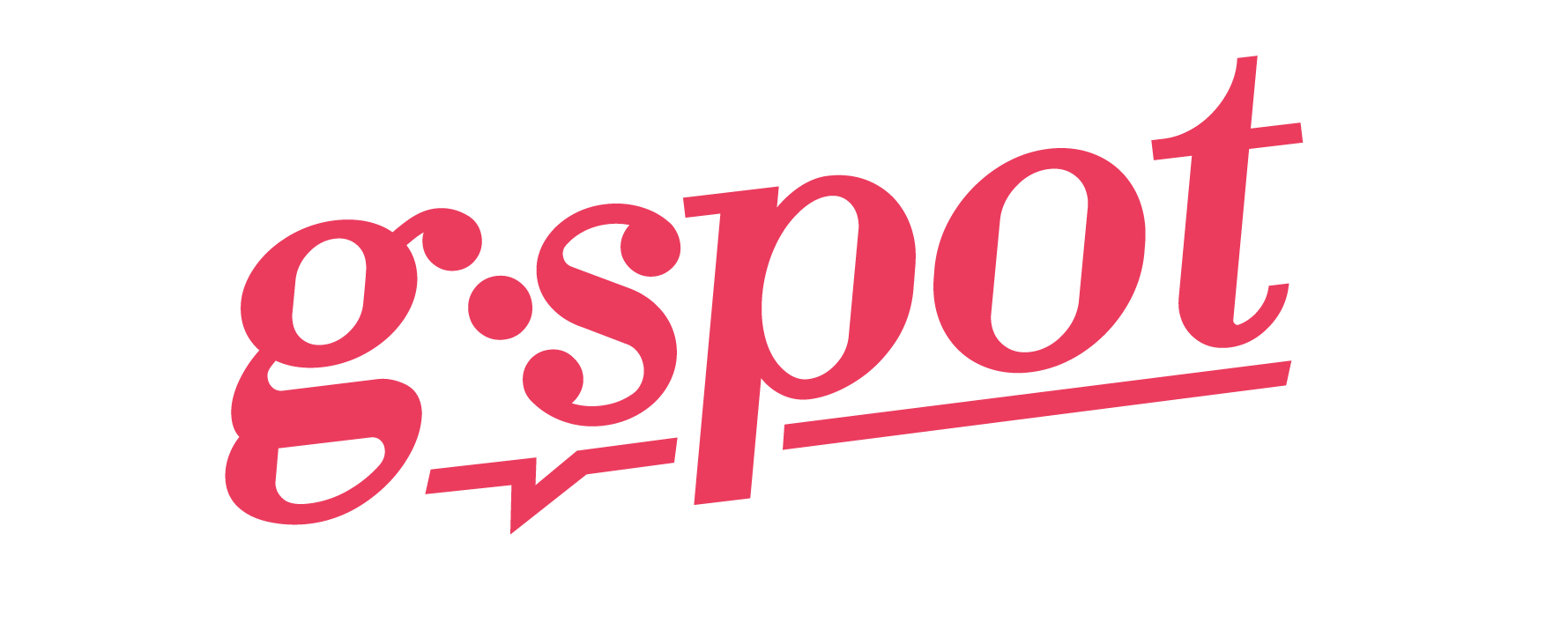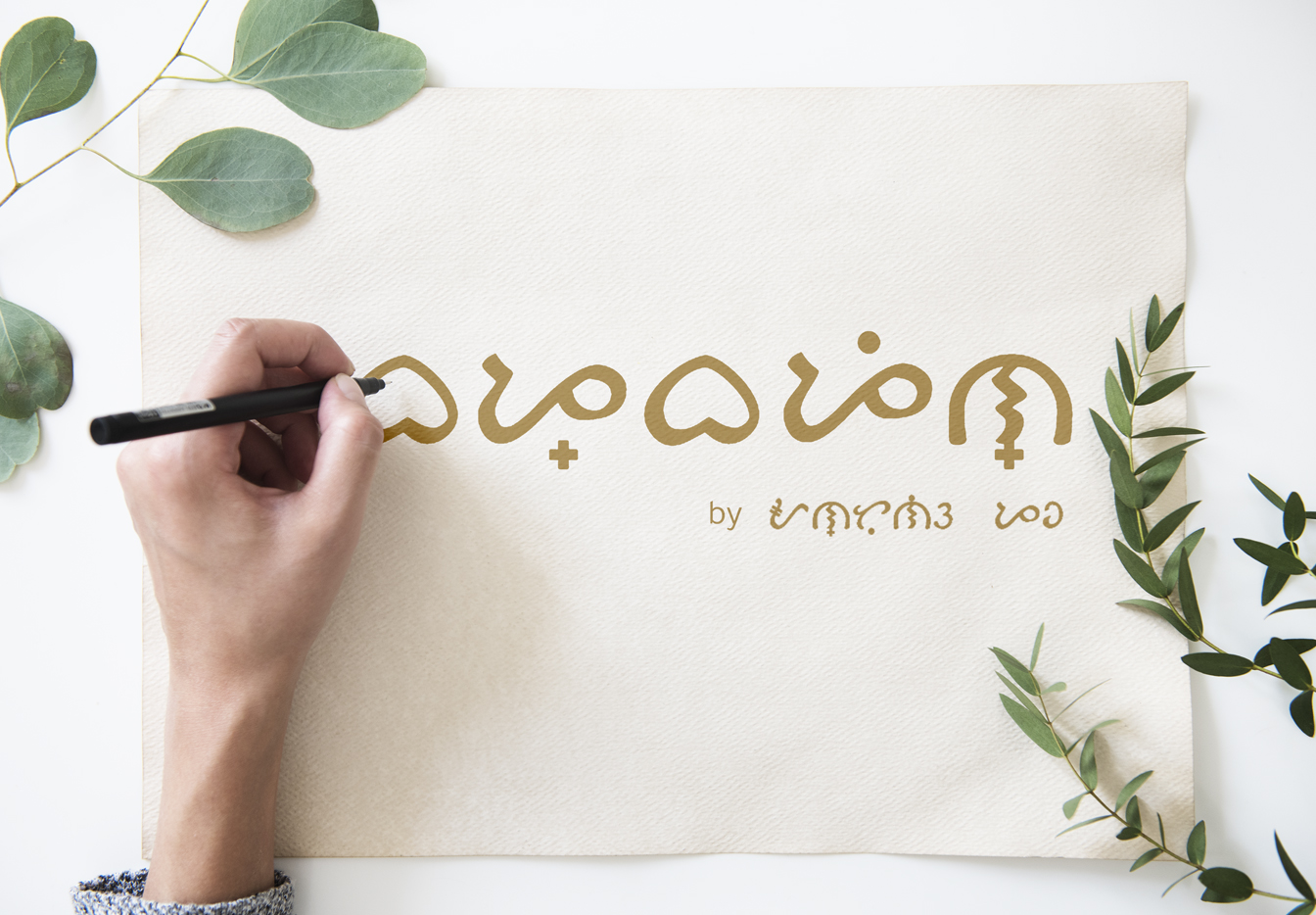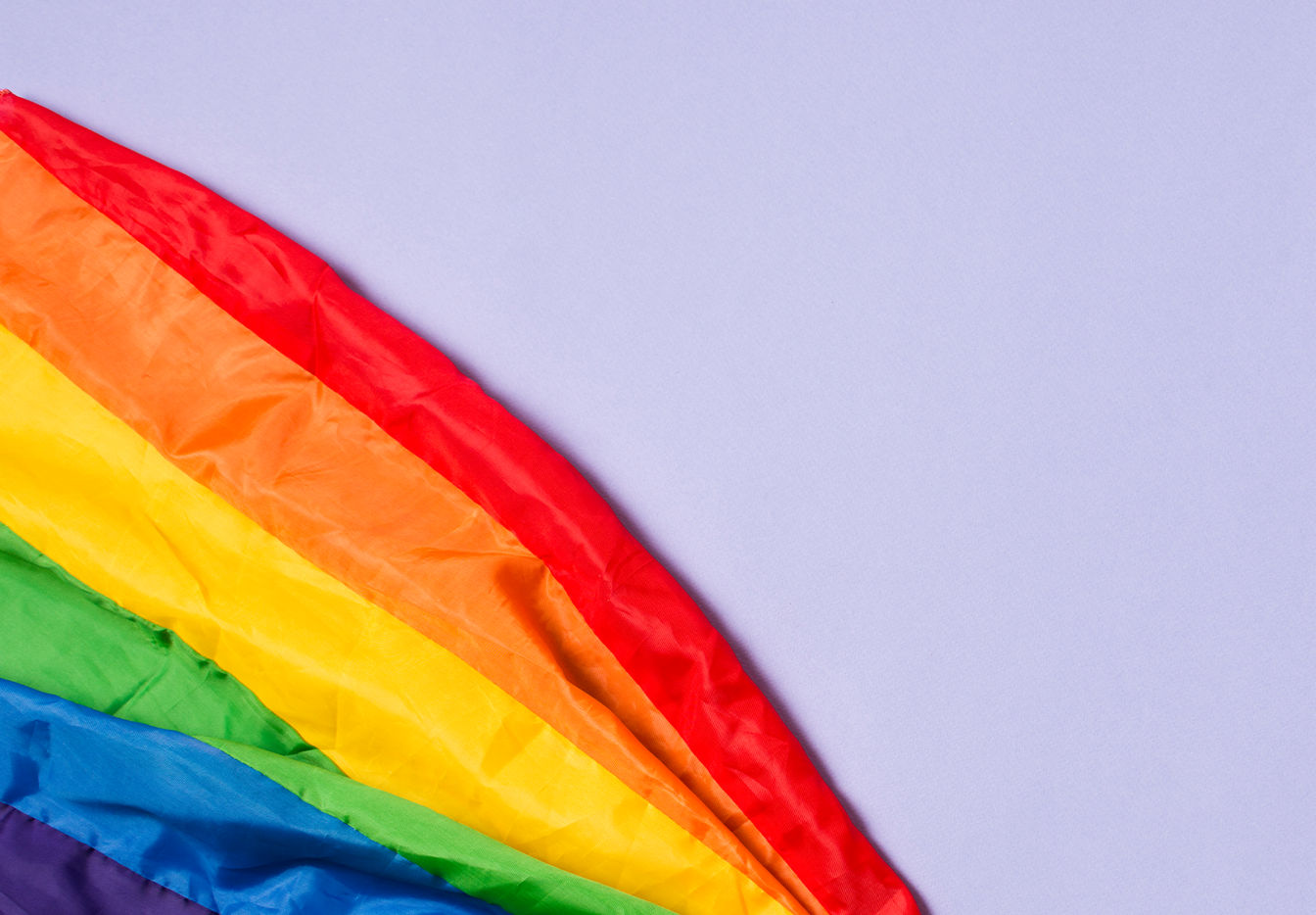We often associate ourselves with multiple things in life to create that sense of belongingness and identity that resonates best with us—from books, logos, and activities to animals, songs, and simple items such as a cross—all of which are woven into our culture and beliefs.
One of the many things we have given meaning and importance to is a flag. The history of flags goes way back to ancient history, which has continuously symbolized an idea, leaders, towns, ships, and even communities such as the LGBTQ+.
It is not surprising to see the rainbow flag be associated with the LGBTQ+ community, even more so during June, in which the LGBTQ Pride Month is celebrated in honor of the 1969 Stonewall Riots in New York.
However, while the rainbow flag has long represented the LGBTQ+ community, it is not the only flag that resonates with its people. The community is constantly evolving with different groups and their preferred identity, gender, and sexuality that best portrays and raises awareness of their challenges and stories.
Here are 14 flags that you might have seen circulating in the media, and who knows, during your next Pride Parade.
Abrosexual Flag
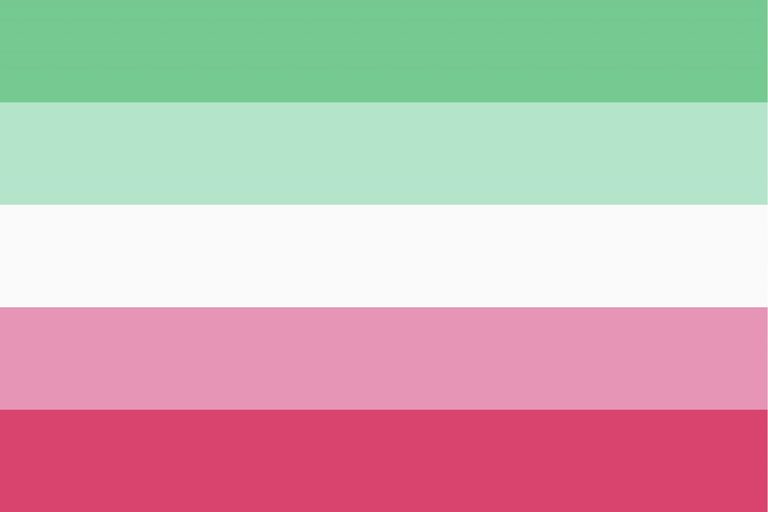
Abrosexual refers to a person with fluid sexual and romantic attractions and may even change their sexual orientation from time to time. This also falls under the multisexuality umbrella, which involves people of all identities who are attracted to more than one gender.
This flag was created by Mod Chad of pride flags-for-us in 2015 when an anonymous Tumblr user requested it. The colors of the flag were, later on, acknowledged as what they represent: green (queer attraction), white (shift of attraction), and pink (the actual shift of itself).
Agender Flag
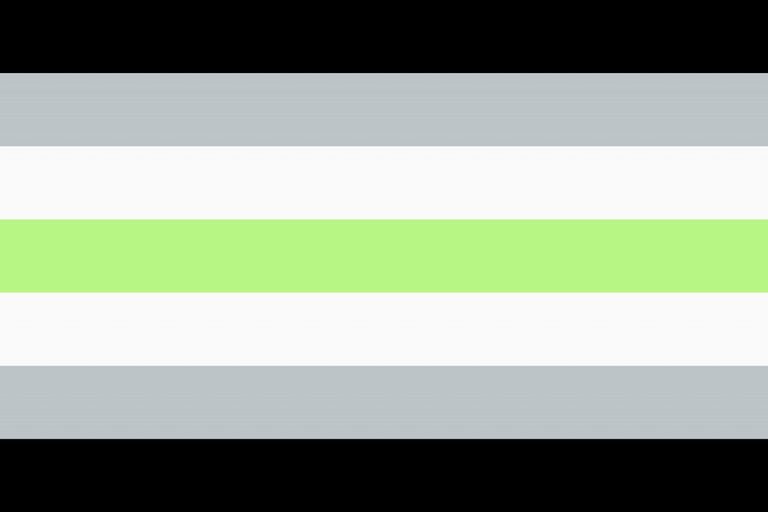
Agender refers to a person not having a gender or a “lack of” gender. Most agender people see themselves neither as a man nor a woman, or both, and are often depicted as genderfree or genderless.
This was flag was created by Salem X, a New York-based artist and activist. In the flag, there are seven stripes: two black, two gray, two white, and one green; black and white (the absence of gender), gray (semi-genderless), and green (nonbinary genders).
Asexual Flag
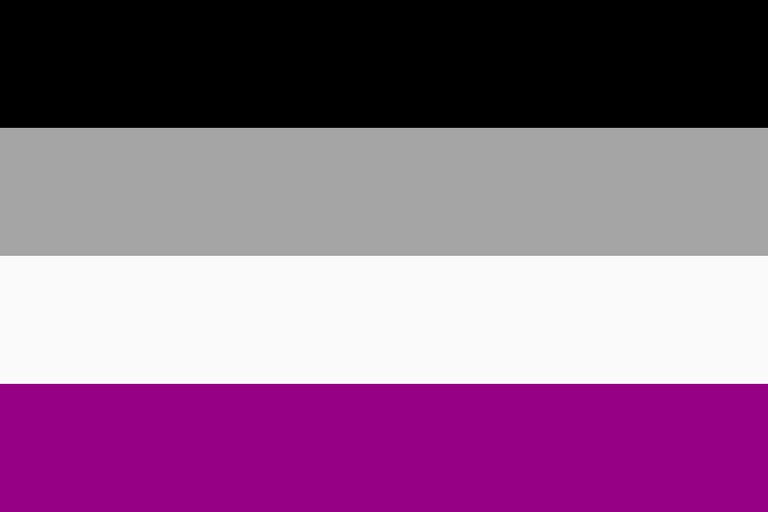
Asexual refers to a sexual orientation in which an individual does not experience any sexual attraction regardless of gender. However, asexual people may still feel romantic attraction towards an individual and some even engage in sexual activities without feeling any sexual attraction.
The flag was created in 2010 when an Asexual Visibility and Education Network contest was conducted. The flag consists of four horizontal stripes: black, grey, white, and purple. Black represents asexuality, grey is the thin line between sexual and asexual, white is sexuality, and purple is the community.
Aromantic Flag
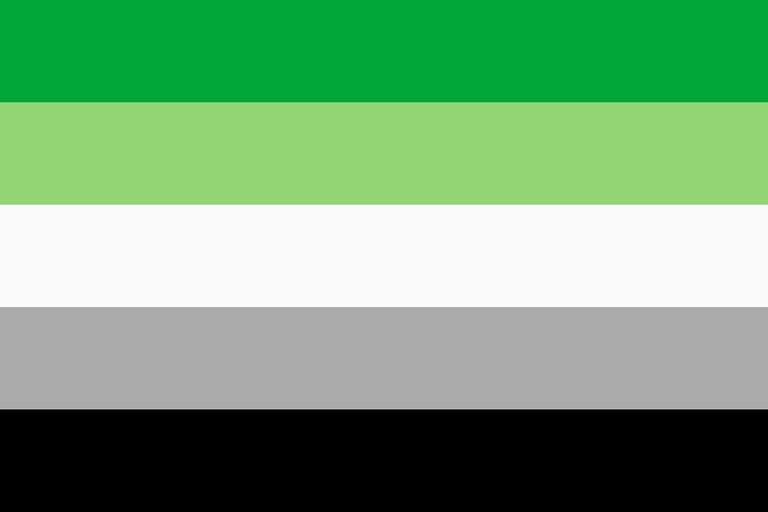
Contrary to asexual, aromantic refers to a romantic orientation wherein an individual does not experience any romantic attraction regardless of gender and sexuality. However, aromantic people can still feel sexually attracted to an individual, and this may vary depending on their preference.
The flag was created by a Tumblr user Cameron from Australia in 2014, with the colors green, white, grey, and black. The green represents aromanticism, the white represents platonic, the gray represents gray-aromantic and demiromantic people, and the black represents the sexuality spectrum.
Bisexual Flag

Bisexual refers to a person who experiences romantic and sexual attractions, and engages in romantic and sexual relationships, with two or more genders and sex but not all.
The flag was created by Michael Page, a Florida-based LGBTQ activist, in 1998 with pink, blue, and purple colors. The color pink represents the attraction of one’s gender, the color blue represents the attraction toward a different gender, meanwhile, the purple represents the attraction to two or more genders.
Demisexual Flag
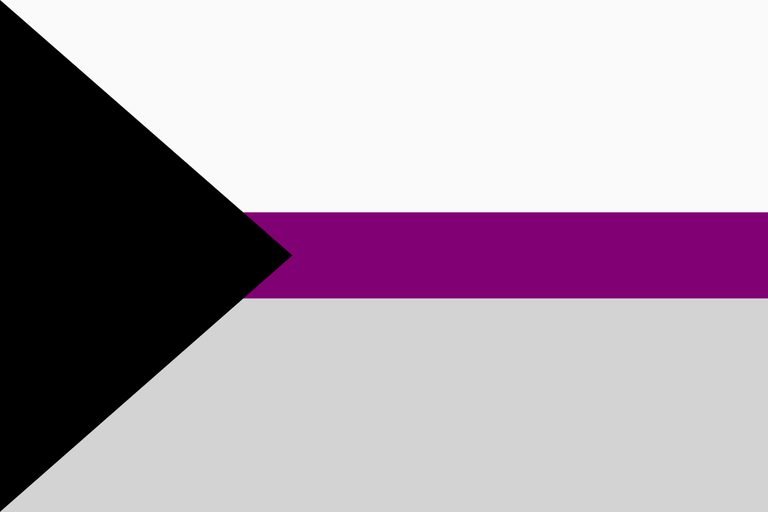
Demisexual refers to a sexual orientation in which an individual only feels sexual attraction to someone after forming a deep emotional bond with them. Unlike most people, demisexual people rarely feel sexually attracted or have little to no interest in engaging in sexual activities.
The term was coined in 2006 during one of the forums by user sonofzeal of Asexual Visibility and Education Network. The flag consists of 3 stripes and 1 triangle with four colors: black (asexuality), gray (asexuality and demisexuality), white (sexuality), and purple (the community).
Gay Men’s Pride Flag

With the great demand of the people of having a sole flag representing the gay men of the community, Tumblr user @gayflagblog designed the very flag back in 2019. However, there were accusations pertaining to the creator being transphobic and that the design was stolen from the sunset lesbian flag, and fortunately, they were long-debunked and the flag itself has been accepted.
The flag typically has either five or seven stripes with different shades of green, white, and different shades of blue. The turquoise to green colors (healing, community, and joy), white (gender non-conforming, non-binary, and transgender folks), and blue to purple colors (pure love, fortitude, and diversity).
Genderfluid Flag
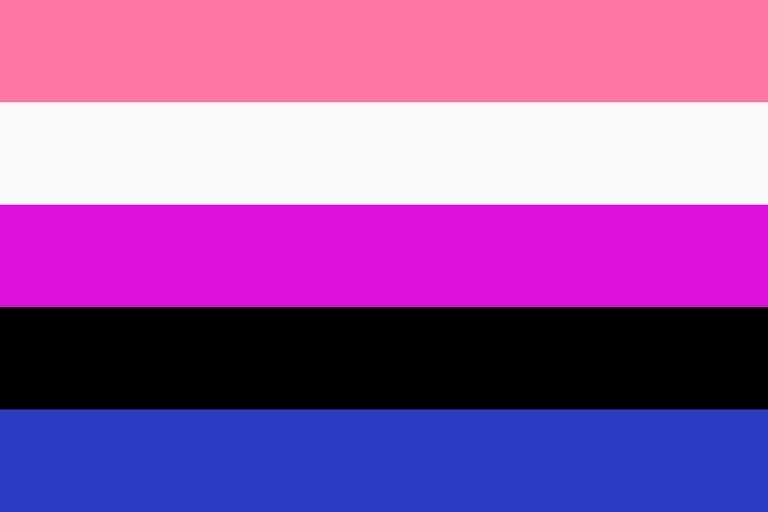
Genderfluidity refers to a person whose gender identity and expression change over time; one day they identify as a woman and on some days they identify as a man. For most people who identify as a genderfluid, this helps them explore further which gender identity they most resonate with. Genderfluid also falls under the transgender and nonbinary umbrella, whose gender identity does not match the sex assigned at birth.
The flag was created by JJ Poole in 2013, having a five-striped color flag with the colors pink, white, purple, black, and blue. Pink represents feminity, white represents lack of gender, purple represents a combination of masculinity and femininity, black represents all genders in every spectrum, and blue represents masculinity.
Intersex Flag
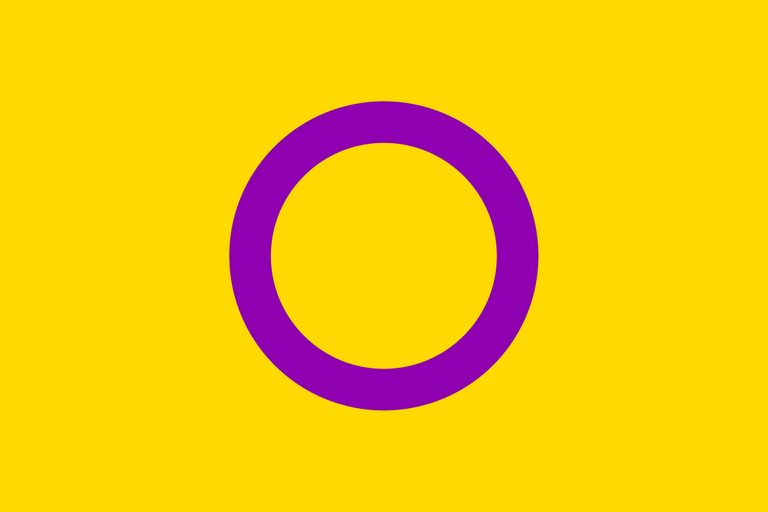
Intersex refers to an individual who is born with reproductive or sexual anatomy that does not coincide with the typical male or female. At times, a person might appear female on the outside with mostly male anatomy on the inside, and vice versa.
The flag was created in 2013 by Morgan Carpenter, then co-chair of Intersex Humans Rights Australia, with the colors yellow and purple as a way of symbolizing hermaphrodite colors. The circle also represents wholeness and completeness.
Lesbian Flag
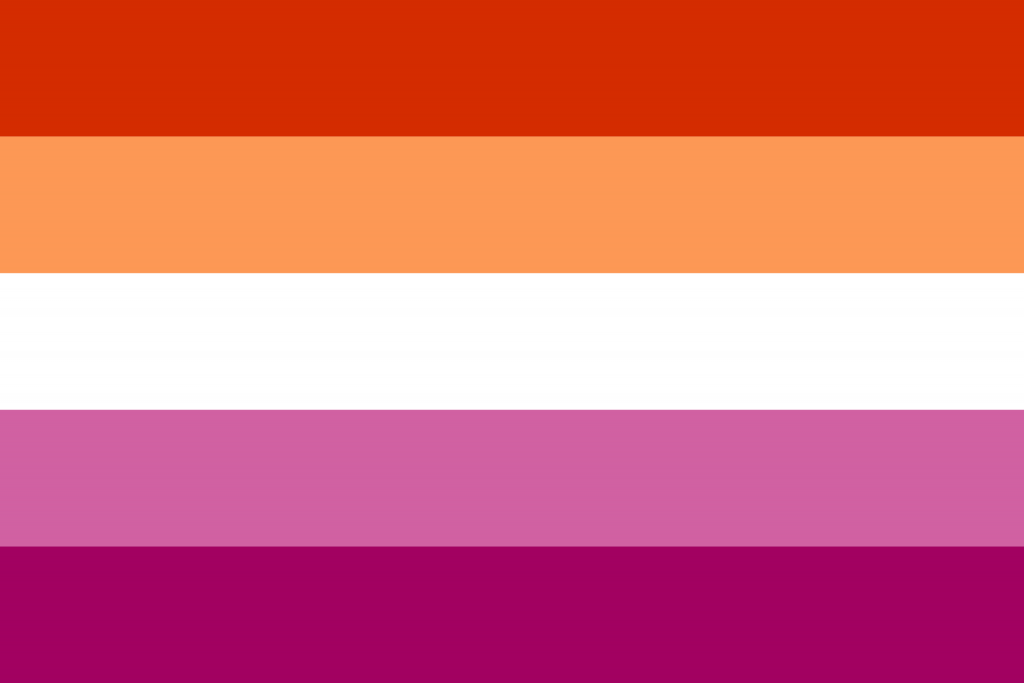
Lesbian, a form of homosexuality, refers to an individual who is sexually and romantically attracted to women.
There have been multiple variations of the lesbian flag, however, the latest and most embraced version was proposed last 2018 in an article in Medium entitled “A Lesbian Flag for Everyone”. The simplified five horizontal-striped flag had different shades of pink, white, orange, and red were used to represent womanhood, gender nonconformity, freedom, and love.
Non-Binary Flag
Non-binary refers to a gender identity that is neither exclusively man or woman, or sometimes in between or beyond both genders. Non-binary, or enbys, may identify as genderfluid, agender, genderqueer, or something else.
The flag was created by Kye Rowan in 2014 with the colors yellow (people whose gender exists beyond the binary), white (people with many or all genders), purple (people whose gender are mixed of male and female), and black (people not having a gender).
Pansexual Flag
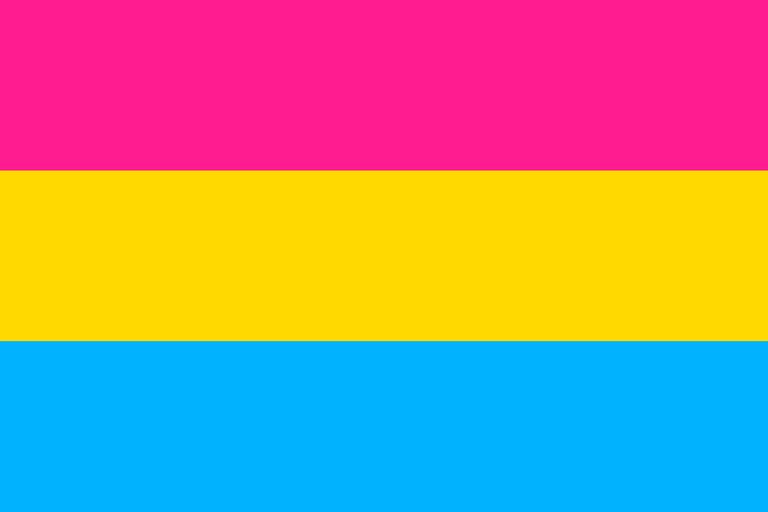
Pansexual refers to an individual who is sexually and romantically attracted to people regardless of their gender and sexual identity.
The flag was created by Jasper V in 2010 having three horizontal stripes: pink (attraction towards people who identify as female), blue (attraction towards people who identify as male), and yellow (attraction toward people who identify as genderqueer, nonbinary, agender, androgynous).
Polyamory Flag
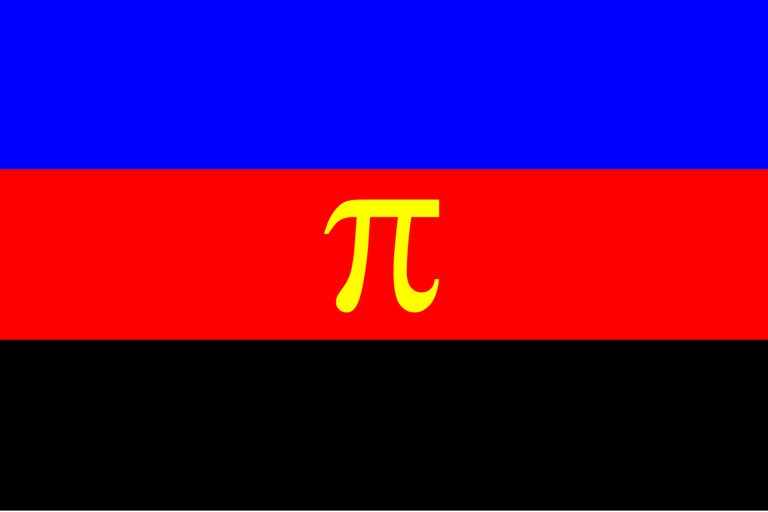
Polyamory refers to an individual who has multiple romantic relationships simultaneously. However, there is still a sense of exclusivity in the relationship as each partner in the relationship is aware of the others.
The flag was created by Jim Evans in 1995 with the colors blue (openness and honesty of the people in the relationship), red (love and passion), and black (solidarity with the people who must hide their polyamorous relationship from the world). The flag also comprises a yellow Greek pi symbol, which represents the infinite options for people available in a polyamorous relationship.
Transgender Flag

Transgender refers to a gender identity of an individual that differs from the sex they were assigned at birth. Trans people express their gender identity differently; be it from the way they dress, their behavior, and mannerisms. Although this is not done always, people would take hormone pills and undergo surgery, and even change their names to match their gender identity.
The flag has long existed since 1999 when an American transgender navy Monica Helms created the design of the flag. A year later, it made its debut during the Pride Parade at Phoenix. The colors of the flag featured light blue and pink (traditional colors linked to baby boys and girls respectively) and white (represents those who are intersex and transitioning).
While there may be an overflowing category for one to belong to, at the end of the day, gender and sexual identity, orientation, and attraction are fluid and one should not feel obliged to stick to one. Life is too long not to spend it exploring your preference and learning about yourself. In the end, it is what your heart desires that matters and not what society has enforced upon you.
